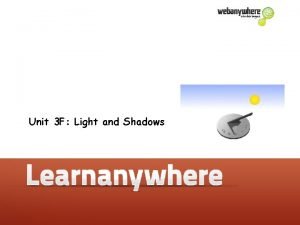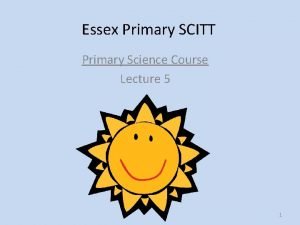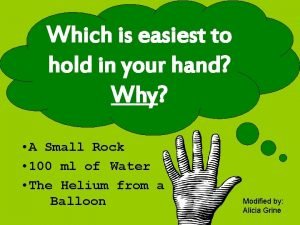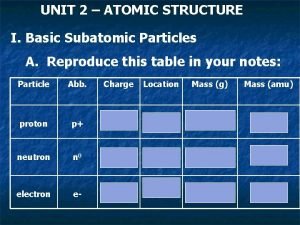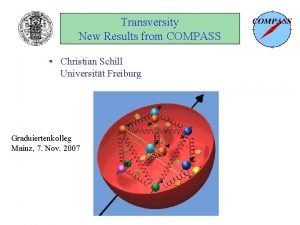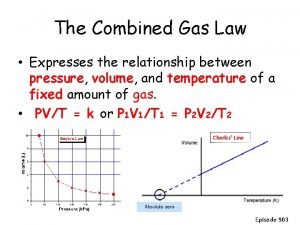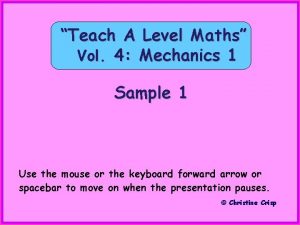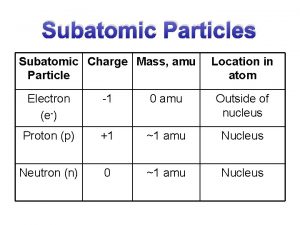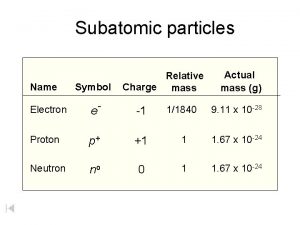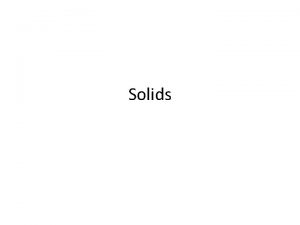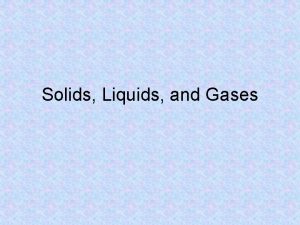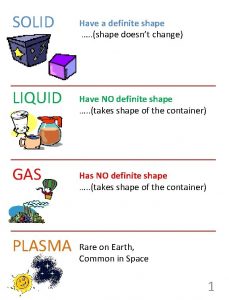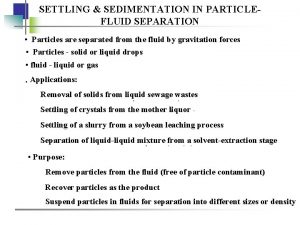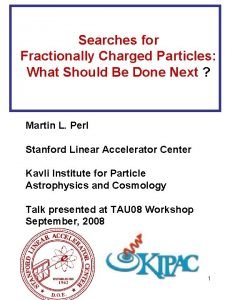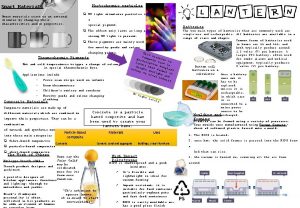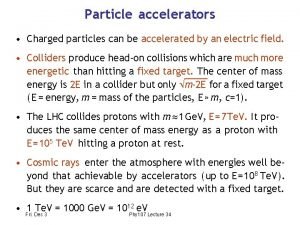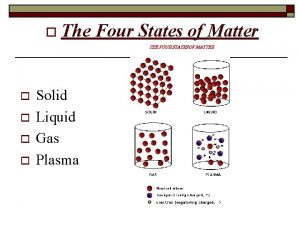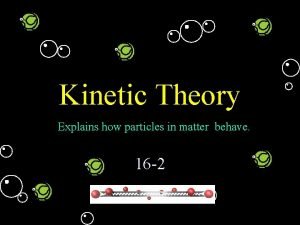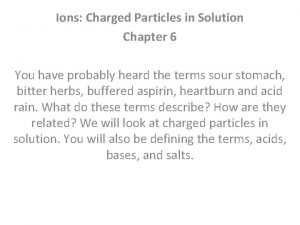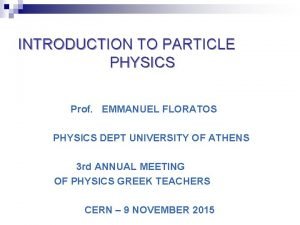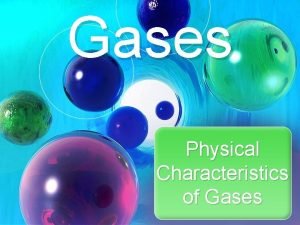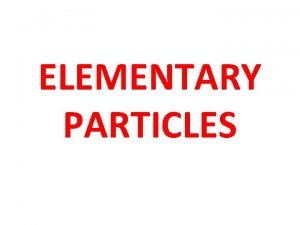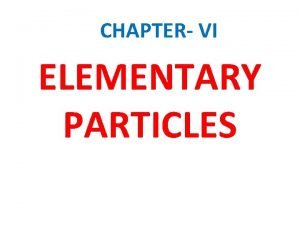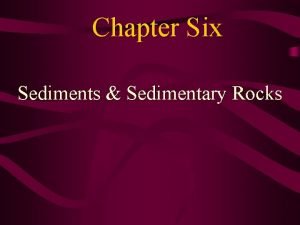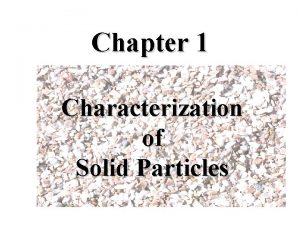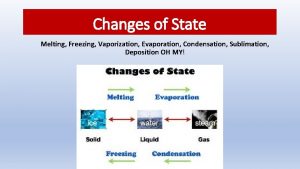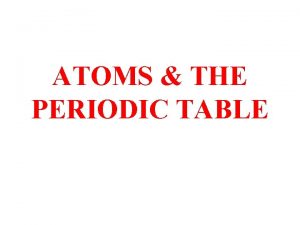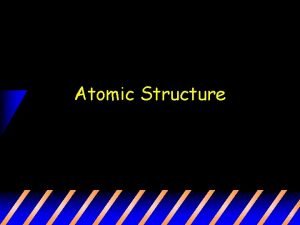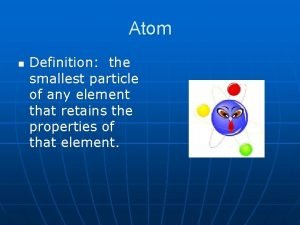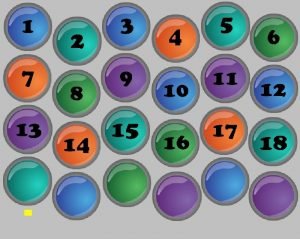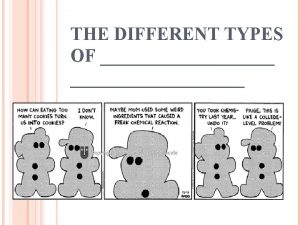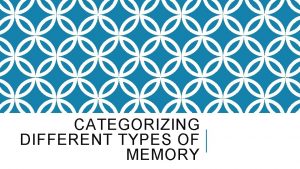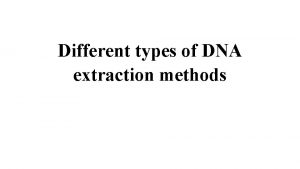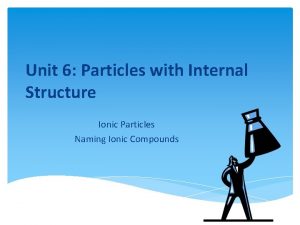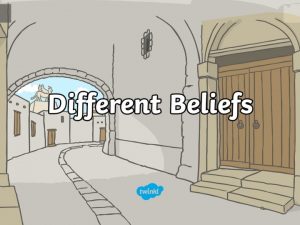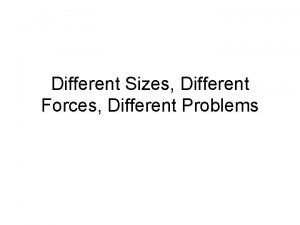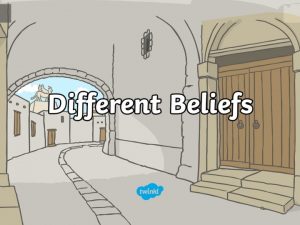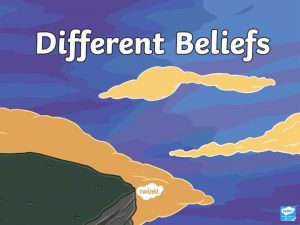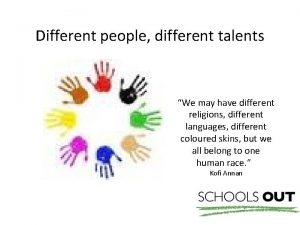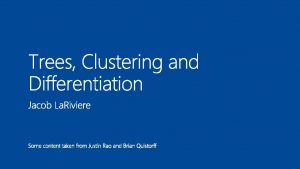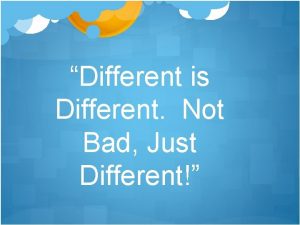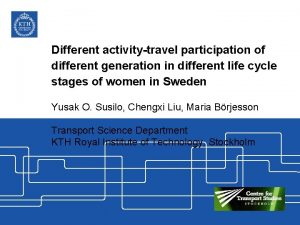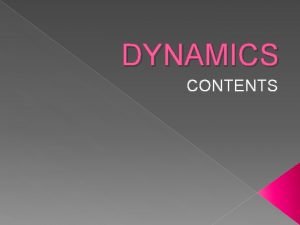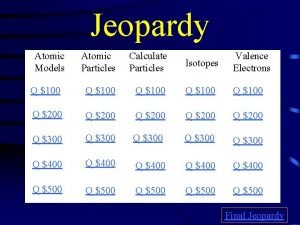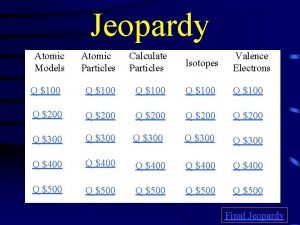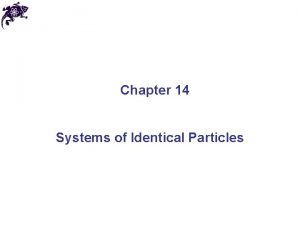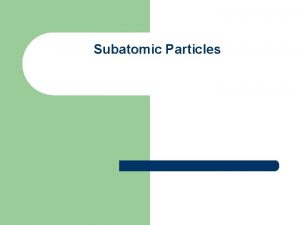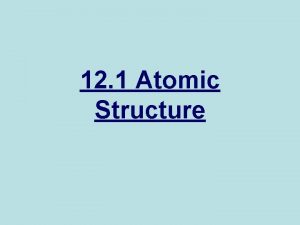Unit 4 Different Types of Particles Day 1





























































- Slides: 61

Unit 4: Different Types of Particles

Day 1 Activity/Assignment Learning Targets • Discussion about the • Review particle Hindenburg knowledge • Explain why scientists are interested in different types of particles

• http: //www. youtube. com/watch? v=F 54 rq. Dh 2 m. WA What was the hydrogen gas used for? What is the problem with hydrogen gas? • What do we fill our balloons up with to get the same effect?

Why are blimps safe? Unlike the great German Zeppelins of fifty years ago, the Goodyear blimps are filled with helium, an inert gas. Although Hydrogen is a better lifting gas, lighter and more plentiful than helium, it is terribly flammable, even explosive. Helium is found in the earth, mixed with other natural gases. The most significant deposits yet discovered are in northern Texas, Kansas and Colorado.

Characteristics of Particles Compare the Goodyear blimp with the Hindenburg: • Differences? • Similarities?

Particles • Are in constant motion • Always move in straight lines • Transfer ENERGY by bumping into each other or their surroundings • Some particles are MOLECULES – made up of smaller particles

Molecules • Examples of molecules: – Water, salt, sugar, helium gas, carbon dioxide • The smaller particles that make up molecules are TIGHTLY bonded together – Sometimes when we break bonds, the reaction gives off energy – Sometimes when we break bonds, the reaction takes in energy

Day 2 Activity/Assignment Learning Targets • Un-mixing mixtures • Mystery Liquids • Describe characteristics that can be used to distinguish between substances and mixtures

How do we know when something is a mixture?

How can we separate mixtures?

Mystery Liquids Clean-up • DO NOT pour liquids down the sink!!! • Carefully pour liquids in waste jars • Rinse out beakers and return all items to box • Return box to front of class

Characteristic Properties Liquid A Density Solubility Temp. Graph Appearance Odor Flammability Liquid B

How do we know when something is a mixture or a pure substance? ET: Record in your journal the answer to this question about lemonade: Is lemonade a mixture or a pure substance? Why?

White Substance Black Substance Appearance Describe Color, Shape, Size Draw picture How could you separate these? So if you can physically separate a mixture but not a compound, is this a mixture or a compound?

Liquid H Liquid E Appearance Describe Color, Flowy-ness Odor Solubility Sugar cube after stirring for 1 minute Flammability Boiling Point So if you can physically separate a mixture but not a compound, is this a mixture or a compound?


Day 3 (block) Activity/Assignment Learning Targets • Jelly bean atoms • Unit 4 Worksheet 1 • Distinguish between elements, compounds, and mixtures. Homework today: Elements, Compounds, and Mixtures Worksheet


• For each jelly bean combo answer these questions: –DRAW the beans you see. Remember these represent atoms. –Is this an element, compound or mixture? –How can you tell? (use flowchart) • After you are finished with all 6 stations, cover your answer sheet and have a partner quiz you. Your teacher will call you up to identify a set up at her table. You should get checked off before the end of the period.

Day 4 Activity/Assignment Learning Targets • Break apart water • (also: Go over classwork and homework; list new characteristic property) • Using water as an example, explain “fixed ratios” of atoms in compounds

Warm-up/Entry Task (answer in your journal) What is the ratio of Iron to Sulfur atoms that you drew in the compound Iron Sulfide? A mixture of iron and sulfur Fe + S A compound of iron and sulfur (Iron Sulfide) Fe. S

Are all compounds in a fixed ratio? Are all compounds in a fixed ratio of 1: 1?

ELECTROLYSIS I predict that when we hook up the electrodes to the + and – terminals, we will collect _________ at the + terminal and ______ at the – terminal because: We can test which gas it is by: I observed that when we collected the gas at the + terminal, we saw: When we collected the gas at the – terminal, we saw:

Entry Task: ELECTROLYSIS I predict that when we hook up the electrodes to the + and – terminals, we will collect _________ at the + terminal and ______ at the – terminal because: We can test which gas it is by: -I observed that there was more gas at this terminal: -I observed that when we collected the gas at the + terminal: -I observed that when we collected the gas at the – terminal:

Day 5 Activity/Assignment Learning Targets • Chemical Formulas Worksheet • Be able to write the chemical formulas for compounds and elements

Rules for Chemical Formulas • Chemical formulas: used to show type and number of atoms in an element or compound. • Atoms: represented by one or two different letters. • When more than one atom of a specific element is found in a molecule, a subscript is used.

Example: Hydrogen Peroxide Compound is made of 2 oxygen atoms and 2 hydrogen atoms



Day 6 Activity/Assignment Learning Targets • Unit 4 Checkpoint Worksheet • Be able to write the chemical formulas for compounds and elements • Review elements, compounds, and mixtures

Day 7 (block) Activity/Assignment Learning Targets • Computer Lab: Dalton’s Playhouse • Explain experiments done by scientists that showed how elements and compounds combine or break apart in chemical reactions

Chemical Reactions Vocabulary • Reactants: Elements or compounds that are put in to a chemical reaction (the “ingredients”) • Products: Elements or compounds that are made from a chemical reaction (the “cake”)

Day 8 Activity/Assignment Learning Targets • Dalton’s Playhouse Whiteboards • Explain experiments done by scientists that showed how elements and compounds combine or break apart in chemical reactions

What did the work of these scientists show us? On your white board include: 1. Diagram of the Experiment (labels) 2. Evidence that starting mass = ending mass 3. One thing connected to our lives that came out of this experiment

Friday 4. 6: What did the work of these scientists show us? Take out your completed lab to be stamped Joseph Priestley Robert Boyle Antoine Lavoisier

Friday 4. 6: What did the work of these scientists show us? Take out your completed lab to be stamped Joseph Priestley Reactant= Calx Product=Oxygen 7. 39 lost=gained We use energy to convert OXYGEN Antoine Lavoisier Robert Boyle 4. 8 lost=gained Reactants= Diamond + Oxygen Hydrogen+ Oxygen= Water Products= Gas 1. 39 lost=gained

What did the work of these scientists show us? Joseph Priestley Experiment: Burned calx and collected gas (oxygen) Antoine Lavoisier Robert Boyle Experiment: Burned oxygen and hydrogen and a gas was produced Experiment: Burned diamonds and charcoal with oxygen Starting 100 g=100 g Connection: Breathe it all the time and need it to survive; We also use energy to convert things like gasoline Starting 9. 06 g= 9. 06 g Connection: Composition of Water is Hydrogen and Oxygen- this we use all the time and did hydrolysis to prove H 2 O Starting 1. 26= 1. 26 Connection: Cooking you mix ingredients and add heat and they taste different but they’re still there

Day 9 Activity/Assignment Learning Targets • Review for Quiz • Review for quiz

Exit Ticket • Draw molecules for the following chemical formulas: 1. 3 H 2 O 2. 4 He 3. 2 NH 3

Day 9 -10 Alternative Lessons

Now you are going to practice using evidence well. Record in your journal: I know that water is made of 2 parts Hydrogen and 1 part Oxygen because in class we : This shows that: If it weren’t true, that would mean that:

ELECTROLYSIS: The Big Idea Name of GAS: • Ratio of GASES • Chemical Separation Name of GAS:

ET: Complete and check your homework Checkpoint: Mixture or Pure Substance? a. Mixture or Pure? If mixture, compounds, elements, or both? b. List elements c. **If completed a & b, write each formula

Evaporation Hydrolysis of of Salt Water Mixture or Compound Separate with Chemical or Physical Change Na. Cl + H 20 H 2 0

Can we use hydrolysis to solve energy issues? http: //www. zapkolik. com/59663/how-works-hydrolysis-simple-discovery. html

As drought and Global Warming intensify, conflict over fresh water will increase. Right now there are wars being fought over access to clean water. Democracy Now: http: //www. youtube. com/watch? v=amob. FCpe 83 Y Until 3: 30 or 6: 40 A Women’s Journey: http: //www. youtube. com/watch? v=Tc. XJn. ZBn. BRU&feature=related Until 1: 40 and then 4: 45 -10: 15

Answer in your journal Using the physical property of a mixture (you can separate salt from water), how do scientists use this knowledge to get fresh water from the ocean?

These countries have built what they think might be a technological solution to their water shortages ISRAEL AUSTRALIA

"In the past ten years, Victoria (Australia) has experienced several water crises, higher temperatures and record low rainfall. "

The plant site is about 500 meters inland associated infrastructure will include tunnels connecting the plant to marine intake and discharge structures up to 1. 2 km out to sea, an 85 kilometer pipeline to connect the plant to Melbourne's water supply system, and power supply infrastructure for the plant. Wonthaggi desalination plant Location Wonthaggi, AUSTRALIA Estimated output Extended output Cost 410 megalitres per day 550 megalitres per day A$3. 5 billion[1] Energy generation offset Windfarm at Glenthompson (proposed) Technology Percent of water supply Operation date Reverse Osmosis (proposed) DESALINIZATION Estimated 33% of Melbourne under construction

• Desalinization plant will pipe water 75 km away • Energy consumption is huge and the government proposes wind power to generate its electricity • Cost of project is est. $7. 5 US Billion at 2008 rates Nearby the desalination plant, Little Powlett River and oil rig… What is the environmental impact?

It is unquestionable that Australia is running out of fresh water and drastic action in needed. However opponents of the plan point to the huge energy requirements of seawater desalination, as well as the disruption of the aquatic and terrestrial environment by the plant and its pipelines.

They ask, “is there a better option? ” Why don’t we conserve our water? Take shorter showers, don’t let the water run while brushing teeth, reduce car washing and lawn watering, collect rainwater… Let’s be creative!

What do you think about these technological answers to energy and water problems? Record in your journal: What are some of the + and – you can think of about using these technologies to solve energy and water problems?

Balancing Chemical Equations *Remember the virtual labs from last week? Record this in your notebook • Law of Conservation of Mass: Mass is never lost, created, or destroyed • Total atoms of reactants must = total atoms of products

What is the chemical formula? Coefficient: shows the number of molecules. Coefficients Change!! 2 NH Element Symbol: 1 or 2 letters = 1 element (see periodic table) 3 Subscript: shows the number of that atom. Subscripts Stay the Same!!

Name _________ Period _____ April 24 Entry Task 1. Draw a triangle around the subscript 2. Circle the coefficient 3. Draw a box around the chemical formula 4. Underline the element symbol 2 H₂O

Balancing Chemical Equations Counting Atoms: Record equation Cl F F ___Cl 2 + ___F 2 2 Cl. F 3 Cl F Cl F

What is the Coefficient? Draw in your journal Cl F F Cl 2 + 3 F 2 2 Cl. F 3 Cl F Cl F

What are the Coefficients? Record in your journal ___CH 4 + O 2 ___CO 2 + ___H 2 O CH 4 + 2 O 2 CO 2 + 2 H 2 O ___O 2 + ___H 2 O O 2 + 2 H 2 O ___C + ___O 2 ___CO 2 C + O 2 CO 2 ___N 2 + ___O 2 ___NO N 2 + O 2 2 NO ___NO + ___O 2 ___NO 2 2 NO + O 2 2 NO 2 ___Na + ___H 2 O ___Na. OH + ___H 2 2 Na + 2 H 2 O 2 Na. OH + H 2 ___Cl 2 + ___F 2 ___Cl. F 3 Cl 2 + 3 F 2 2 Cl. F 3

Day 10 (block) Activity/Assignment Learning Targets • Quiz: Different Types of Particles
 Day 1 day 2 day 3 day 4
Day 1 day 2 day 3 day 4 Day 1 day 2 day 817
Day 1 day 2 day 817 Unit 6 review questions
Unit 6 review questions Thermosoftening plastics examples
Thermosoftening plastics examples Flame test principle
Flame test principle Sound will travel at different speeds in different mediums.
Sound will travel at different speeds in different mediums. Examples of a medium in waves
Examples of a medium in waves Cultural relativism
Cultural relativism Different angle different story
Different angle different story Acids and bases have two different faces
Acids and bases have two different faces Different materials have different
Different materials have different What things make us special
What things make us special Argumenterande tal struktur
Argumenterande tal struktur St. valentine's day has roots in several different legends
St. valentine's day has roots in several different legends F
F Pictures of shadows at different times of the day
Pictures of shadows at different times of the day William beanes elementary school
William beanes elementary school Ocean apart day after day
Ocean apart day after day Day to day maintenance
Day to day maintenance As your room gets messier day by day, entropy is
As your room gets messier day by day, entropy is I don't know tomorrow
I don't know tomorrow Beautiful sunday evening
Beautiful sunday evening Growing day by day
Growing day by day Define seed dormancy
Define seed dormancy Germination conclusion
Germination conclusion Observation of plant growth day by day
Observation of plant growth day by day I live for jesus day after day
I live for jesus day after day Casting crowns one day
Casting crowns one day Day one day one noodle ss2
Day one day one noodle ss2 Dayone dayone noodles ss2 小時光 肆號麵鋪
Dayone dayone noodles ss2 小時光 肆號麵鋪 Solid+heat=
Solid+heat= Atom and subatomic particles
Atom and subatomic particles Christian schill
Christian schill Atomic structure worksheet
Atomic structure worksheet Gas law relationships
Gas law relationships Pulleys a level maths
Pulleys a level maths Mass of subatomic particles in amu
Mass of subatomic particles in amu Symbol for subatomic particles
Symbol for subatomic particles Definite arrangement
Definite arrangement The attraction between particles gives solids a definite
The attraction between particles gives solids a definite Definite volume
Definite volume Solid to gas
Solid to gas Hindered settling
Hindered settling The search for fractionally charged particles has–
The search for fractionally charged particles has– Solid diagram particles
Solid diagram particles Photochromic particles
Photochromic particles Charged particles can be accelerated by
Charged particles can be accelerated by Plasma particle arrangement
Plasma particle arrangement Properties of solid, liquid and gas
Properties of solid, liquid and gas Buoyancyability
Buoyancyability Ions charged particles in solution
Ions charged particles in solution Point like particles
Point like particles Postulate 2 states that gas particles are:
Postulate 2 states that gas particles are: Classification of elementary particle
Classification of elementary particle Classification of elementary particles
Classification of elementary particles What processes turn sediment into sedimentary rock
What processes turn sediment into sedimentary rock Characterization of solid particles
Characterization of solid particles Evaporation condensation sublimation
Evaporation condensation sublimation Henry moseley contribution to the periodic table
Henry moseley contribution to the periodic table How are particles arranged in an atom
How are particles arranged in an atom The smallest particle of an element
The smallest particle of an element A heterogeneous mixture of intermediate-sized particles
A heterogeneous mixture of intermediate-sized particles














